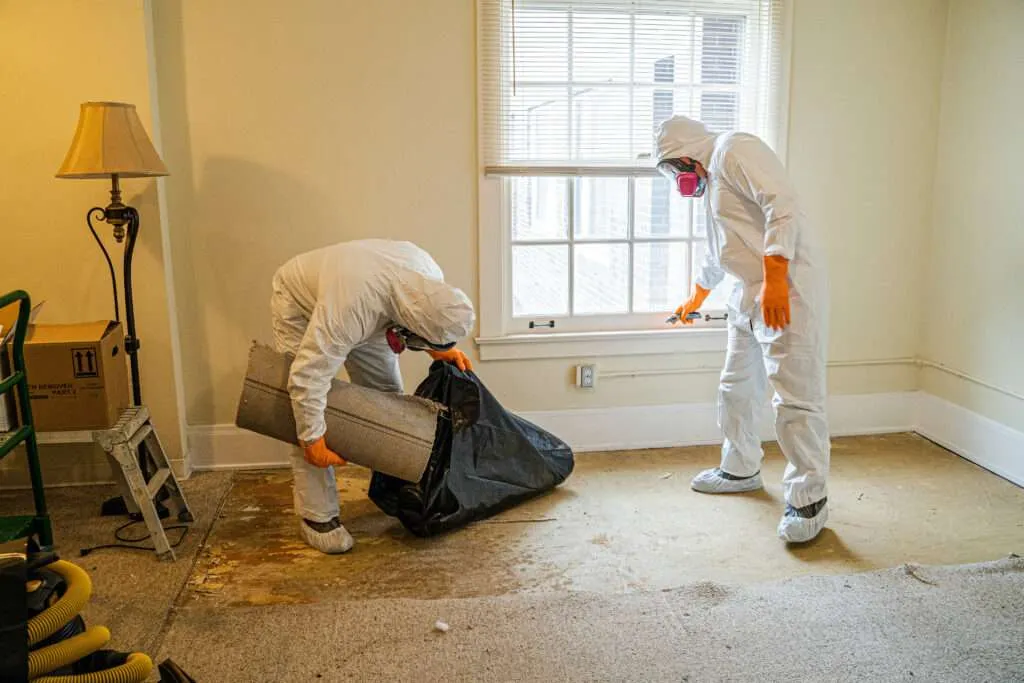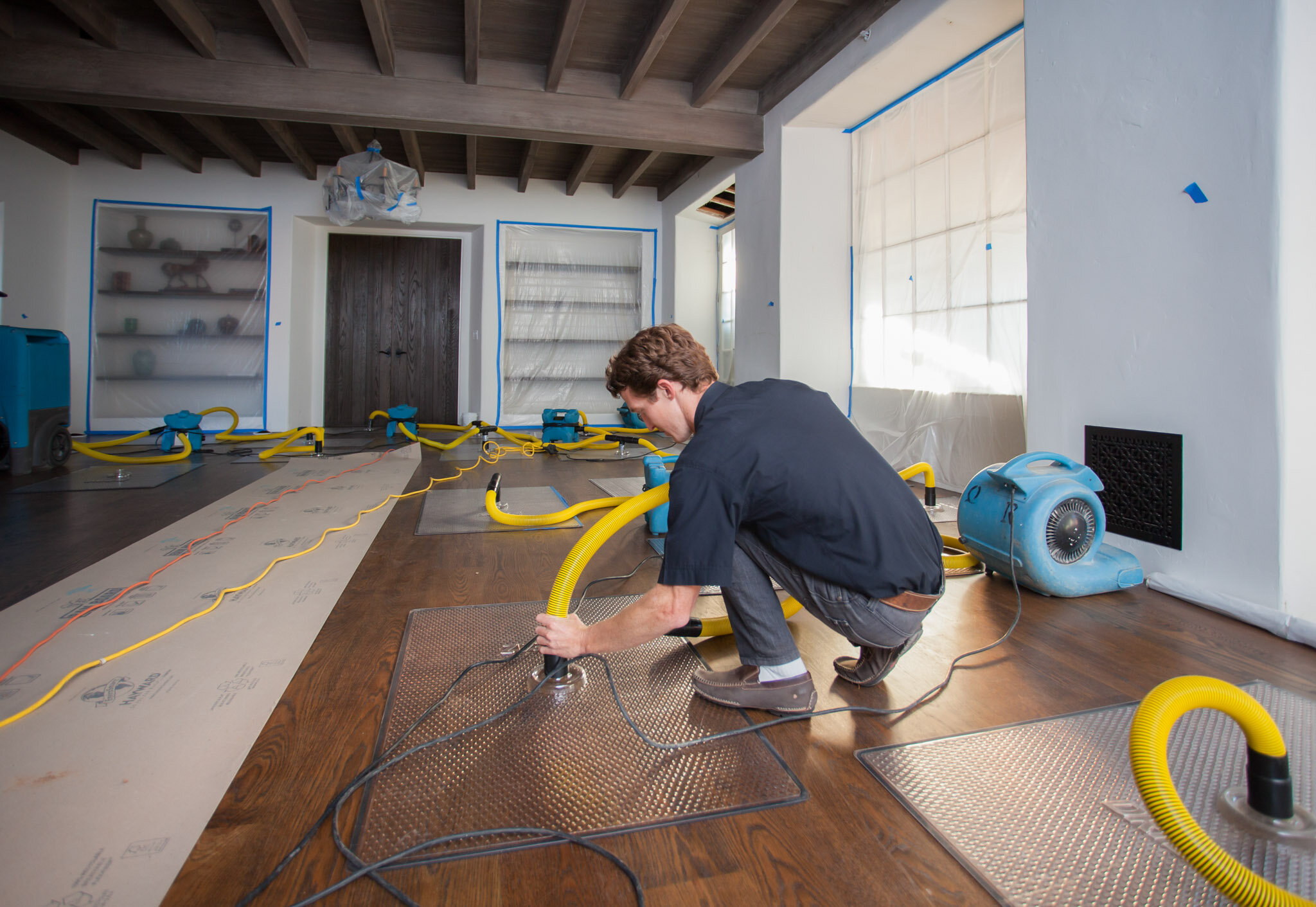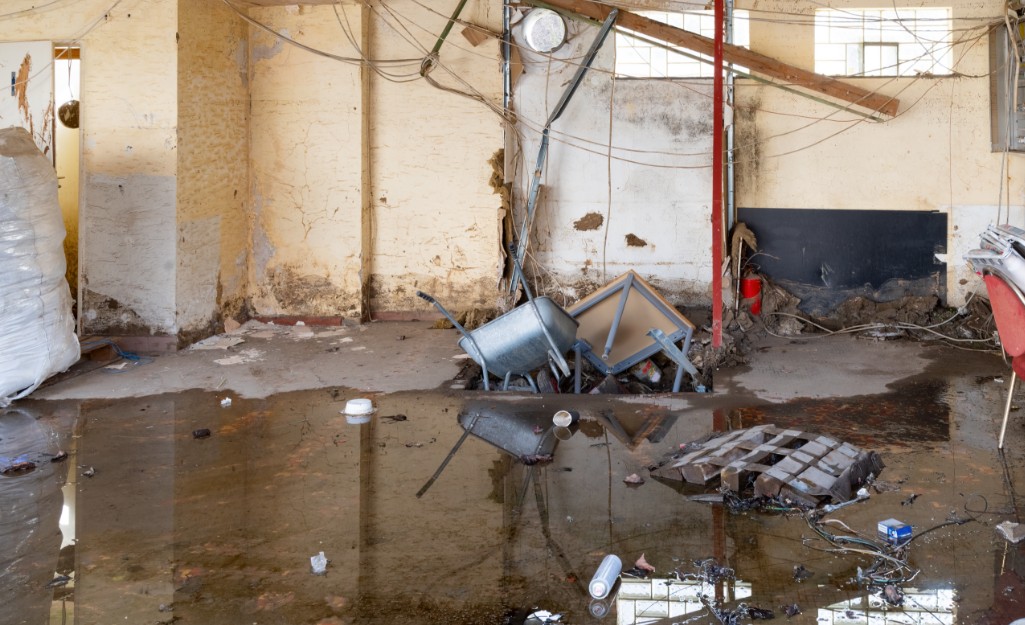Water Damage Restoration 101: Understanding the Process and Cost
Water damage can strike all of a sudden, leaving house owners in a state of confusion. Comprehending the remediation procedure is vital for effective healing. From reviewing the damage to picking the right company, each step influences the overall outcome and cost. Variables such as the type of water damage and necessity also play a substantial function. What are the details strategies utilized in reconstruction, and how can one plan for prospective expenses?
Kinds of Water Damage

Preliminary Evaluation and Examination

Water Extraction Techniques
Complying with the first evaluation, reliable water extraction techniques are utilized to minimize damage and protect against more issues. These strategies involve making use of customized equipment such as completely submersible pumps and industrial-grade vacuum cleaners - Mold Remediation After Water Damage. The selection of technique depends on the volume of water existing and the kind of products influenced. For standing water, completely submersible pumps are commonly made use of for fast removal, while vacuum cleaners are optimal for removing water from carpetings and furniture. Furthermore, advanced methods like water removal floor coverings might be employed for hard-to-reach areas - Flood Cleanup Services. The objective is to remove as much water as feasible, minimizing the potential for mold development and architectural damage. Prompt and reliable water extraction is important in the general water damage restoration procedure
Drying Out and Dehumidification Process
When the water removal is total, the drying and dehumidification process comes to be crucial to recovering the afflicted area. This stage typically employs industrial-grade dehumidifiers and air moving companies to efficiently minimize moisture levels. The dehumidifiers pull in wet air, removing excess humidity, while air moving companies circulate air to accelerate evaporation. Tracking devices is commonly utilized to track moisture and temperature level degrees, making sure excellent drying out conditions. The duration of this procedure can vary relying on the degree of the water damage and ecological aspects. It is necessary to extensively completely dry all impacted products, consisting of wall surfaces, flooring, and home furnishings, to prevent mold growth and architectural damage. Correct implementation of this action is critical for a successful restoration end result.
Cleaning Up and Sterilizing Affected Locations
A thorough initial evaluation and inspection of impacted locations is crucial to recognize contamination levels as soon as the drying procedure is complete. Water Damage Restoration. Reliable cleansing methods and ideal items must then be utilized to get rid of particles and discolorations. Sanitization and sanitation approaches are vital to guarantee that hazardous pathogens are eliminated, restoring the space to a safe condition.
Initial Analysis and Examination
Prior to starting any restoration efforts, an extensive initial evaluation and examination of the impacted areas are important for reliable cleansing and disinfecting. This procedure includes recognizing the level of water damage, establishing the source of the water intrusion, and assessing the products influenced. Examiners generally search for signs of mold and mildew development, structural integrity issues, and damaged items. The evaluation also consists of inspecting wetness levels utilizing customized tools to ensure no hidden water pockets remain, as these can bring about further complications. Documenting the searchings for is important for planning the following action in the repair procedure. A comprehensive initial analysis allows reconstruction specialists to create a targeted approach for effective cleansing and sterilizing, eventually decreasing damage and wellness risks.
Cleaning Techniques and Products
Efficient cleaning and disinfecting of water-damaged areas need a variety of techniques and products tailored to the details materials influenced. For permeable surface areas like drywall and carpeting, extraction approaches are important to eliminate excess wetness, followed by deep cleaning with specialized cleaning agents. Non-porous materials such as tile or steel can be cleaned utilizing commercial-grade cleansers that properly remove contaminants. Vapor cleaning is another efficient technique, specifically for carpetings and furniture, as it uses heats to eliminate microorganisms and mold (Water Damage Restoration). Additionally, environmentally friendly products are progressively preferred for their security and efficiency - Water Extraction And Drying. Eventually, selecting the proper cleaning methods and items not just guarantees immediate tidiness yet additionally aids in preventing additional damage and carcinogen connected with water breach
Sanitization and Disinfection Methods
When addressing water damage, proper sanitization and sanitation methods are crucial to ensure the safety and security and health and wellness of the afflicted atmosphere. After first cleansing, surface areas have to be treated with proper disinfectants to get rid of virus, mold, and bacteria that flourish in damp problems. Usual approaches consist of making use of EPA-approved chemical anti-bacterials, which can be applied through spraying or cleaning methods. In addition, ultraviolet (UV) light systems can efficiently sanitize areas by counteracting microbes without harsh chemicals. The selection of approach typically depends upon the sort of products affected and the level of contamination. Inevitably, complete sanitization not only recovers a secure living space but additionally aids avoid future health dangers connected with lingering wetness and mold and mildew development.

Repair Work and Restoration Options
Assessing the damage created by water exposure is vital for figuring out the ideal repair services and remediation alternatives. Property owners might face various issues, including harmed drywall, deformed floor covering, and compromised architectural components. Depending on the extent of the damage, repair work may entail changing sections of drywall, installing brand-new flooring, or reinforcing structural beams. In cases of extreme damage, full substitute of afflicted materials may be needed. Furthermore, professional conservators often suggest using moisture meters to analyze covert moisture levels before making a decision on the very best training course of action. It is very important to act immediately to stop mold development and additional deterioration. Selecting the ideal choices not just recovers the property but likewise guarantees long-term security and performance.
Elements Affecting Restoration Costs

The level of water damage straight affects the repair sets you back house owners can expect to sustain. Aspects such as the source of the water, the period of direct exposure, and the affected materials greatly influence pricing. Tidy water damage from a busted pipe is typically much less pricey to restore contrasted to damage created by sewage. Furthermore, the level of contamination dictates the need for specialized cleaning and disposal services, even more enhancing expenses. Geographic location likewise plays a role, as regional labor prices and accessibility of restoration solutions can vary. Lastly, the necessity of the action affects prices; quicker treatments normally lead to reduce total costs by avoiding additional damage. Comprehending these variables is essential for property owners when estimating restoration costs.
The three main kinds of water damage are classified based on contamination levels: tidy water, gray look what i found water, and black water. A complete preliminary analysis and evaluation are essential steps in the water damage restoration procedure. For standing water, submersible pumps are typically utilized for rapid removal, while vacuums are optimal for removing water from rugs and furniture. The degree of water damage directly affects the reconstruction sets you back property owners can anticipate to sustain. Tidy water damage from a damaged pipe is usually much less expensive to recover compared to damage caused by sewage.